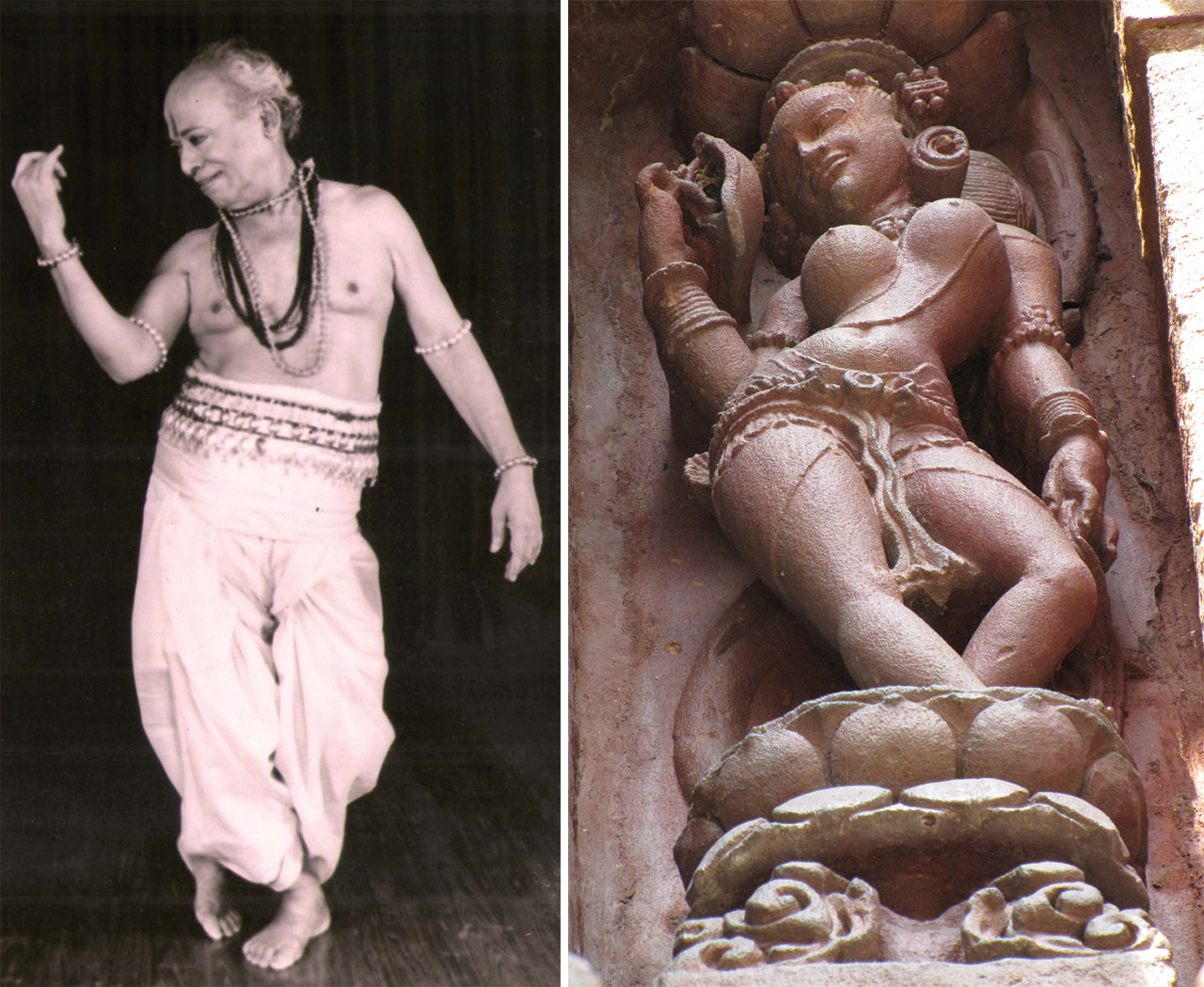
Life is the story of all rasas (emotions). It is only when art epitomizes this truth, does it become sublime. This is why Guru Surendra Nath Jena wove the rhythm of daily human life in his interpretation of the traditional Odissi dance. The resulting style, which came to be known by his name, is considered to be very different from that of his contemporaries, even radical. This was his path to the sublime on which he danced to pour out his devotion to God.
Suggested Read – Classical Dances of India: Reflecting the Rich Heritage
This unique journey lasted many decades. His creative life started with the Jatra form, in the early twentieth century. In time, he became the director of Sharda Kala Kunja of Nagaspur – the most popular Jatra troupe in Odisha in the mid-twentieth century – which performed across the villages of Odisha. Eventually he trained in Odissi dance and in the 1960s, he started teaching it in the conventional style in Triveni Kala Sangam, New Delhi. At round the same time, destiny took him to a visit to the Konark Sun Temple in Odisha. The exquisite sculptures in its Nata Mandap, and in other temples in Odisha, made him feel that these dance poses should be viewed as successively depicting an entire piece of the dance instead of only being its centerpiece. This started his breakaway from the prevailing perception and convention.

Inspired by this fact and by linking the sculptures to the history, sociology and religion of Odisha, he composed unique and outstanding pieces such as: “Konark Kanti”, “Shilp Chandrika” and “Shakti Roopa Yogini”. His style was characterized by celebration of the rural daily life of Odisha; equal emphasis on the female and male elements including the vibhatsa and raudra rasa, as opposed to the focus on the feminine lasya element primarily represented in the shringar rasa; incorporation of Vaishnavite, Shaivite, Shakti and Tantric traditions; some stances and movements altered to synchronize with the depiction of ups-and-downs of life; the importance of yoga-asanas; and bhaav-sanchaar (communication through emotions) rather than shabd-sanchar (communication through words). It was also rooted in his own religious and sociological ideology that all Indian arts are connected to one another.
Music, dance, yoga, painting, poetry, architecture and mythology: the ultimate objective of all is take the artist to the realization of spiritual joy (atma-ranjan), raising the art beyond pleasing other people (lok-ranjan). Guruji’s personal dialogue with the Almighty also expressed his reverence in the poetry he wrote and used for his compositions, such as “Venu Gatha” and “Achoot Kanya”. He also brought to forefront much vernacular poetry of Oriya poets. He poured all his emotion, experience, knowledge and philosophy of Odissi dance in his monumental book: Atman – Odissi Nritya Puran: History, Technique and Aesthetics of Odissi Dance, which is like an encyclopedia of the form.
Suggested Read – 10 Influential Classical Dancers of India that Every Indian Must Know
This journey did not end with his demise in 2007. His children have carried it and walked forward in it. In order to make Guruji’s style more widely-known, they have consistently attempted to create awareness about the reasons and the philosophy underlying it. Guru Pratibha Jena Singh, his eldest daughter and disciple, is the founder of the Nrityashilp Guru Surendra Nath Jena Odissi Dance Foundation. Among other initiatives, the Foundation has been organizing International Festival of Guru Surendra Nath Jena bi-annually. The first one was in 2016, held in New Delhi, India. Its primary intent was to spread the knowledge of the style and ideology of Guru Jena to as many people as possible. Hence it consisted of seminars, talks and presentation of scholarly research papers on Guruji’s Odissi dance style.

International and national artistes showcased choreographic pieces from Guruji’s repertoire. His Oriya poetry was read out and explained to the audience. The second Festival was held in 2018, at Jaipur in Rajasthan, India. Artistes from USA, Europe and the Asian subcontinent paid their tributes to Guruji by presenting pieces from his remarkable style. In 2021, given the restrictions of the ongoing Covid-19 pandemic, it was organized in a hybrid mode at Badogal and Bhogpur villages in Uttarakhand, India; in late October. Guru Surendra Nath Jena’s disciples from all over the world came together in online and offline modes, to dance to his original compositions as a tribute to him.
Suggested read – Traditional Costumes of Indian Classical Dances
Even in the online mode, the traditional backdrop of an Odissi dance performance was beautifully and lovingly maintained; even enhanced. Guruji’s scrupulous attention to his art, students and all aspects of dance reverberated in one of his disciples in the United States of America performing despite having suffered from a severe injury recently. The entire Festival was organized with the help of local young volunteers in the villages of Uttarakhand. Prior to this, they had participated in a month-long yoga workshop, also conducted by the Foundation. They, alongwith other people in the adjoining areas, could see the magnificent performances live; which was a rare opportunity.
The International Festivals of Guru Surendra Nath Jena commemorate the universal appeal of dance for the human heart. If Guruji could have witnessed them, he would have smiled in approval. After all, he had always held that the Divine resides in each soul; and can be experienced best in the sahaj (natural) human life. The human life with all its vibrant rasas.





